Portal:The arts
- Alemannisch
- العربية
- Arpetan
- Azərbaycanca
- تۆرکجه
- Banjar
- 閩南語 / Bân-lâm-gú
- Беларуская (тарашкевіца)
- Bikol Central
- Български
- Boarisch
- Català
- Cebuano
- Čeština
- ChiShona
- الدارجة
- Deutsch
- Eesti
- Ελληνικά
- Español
- فارسی
- Français
- Galego
- Gĩkũyũ
- 한국어
- Հայերեն
- हिन्दी
- Bahasa Indonesia
- IsiZulu
- Italiano
- עברית
- Jawa
- Kapampangan
- ქართული
- Қазақша
- Kiswahili
- Kreyòl ayisyen
- Kurdî
- Latina
- Latviešu
- Lëtzebuergesch
- Lietuvių
- Magyar
- Македонски
- മലയാളം
- ဘာသာမန်
- Bahasa Melayu
- မြန်မာဘာသာ
- Nederlands
- 日本語
- Нохчийн
- Norsk bokmål
- Norsk nynorsk
- Occitan
- Олык марий
- Oʻzbekcha / ўзбекча
- پنجابی
- Picard
- Plattdüütsch
- Polski
- Português
- Română
- Runa Simi
- Русский
- සිංහල
- سنڌي
- Slovenčina
- کوردی
- Српски / srpski
- Svenska
- Taclḥit
- Татарча / tatarça
- Тоҷикӣ
- Türkçe
- Українська
- Tiếng Việt
- 文言
- West-Vlams
- 吴语
- Xitsonga
- 粵語
- Zazaki
- 中文
Portal maintenance status: (June 2024)
|
The arts
The arts or creative arts are a vast range of human practices of creative expression, storytelling, and cultural participation. The arts encompass diverse and plural modes of thinking, doing, and being in an extensive range of media. Both dynamic and a characteristically constant feature of human life have developed into stylized and intricate forms. This is achieved through sustained and deliberate study, training, or theorizing within a particular tradition, generations, and even between civilizations. The arts are a vehicle through which human beings cultivate distinct social, cultural, and individual identities while transmitting values, impressions, judgements, ideas, visions, spiritual meanings, patterns of life, and experiences across time and space. (Full article...)
Featured articles - load new batch
-
Image 1Night is a 1960 memoir by Elie Wiesel based on his Holocaust experiences with his father in the Nazi German concentration camps at Auschwitz and Buchenwald in 1944–1945, toward the end of the Second World War in Europe. In just over 100 pages of sparse and fragmented narrative, Wiesel writes about his loss of faith and increasing disgust with humanity, recounting his experiences from the Nazi-established ghettos in his hometown of Sighet, Romania, to his migration through multiple concentration camps. The typical parent–child relationship is inverted as his father dwindled in the camps to a helpless state while Wiesel himself became his teenaged caregiver. His father died in January 1945, taken to the crematory after deteriorating from dysentery and a beating while Wiesel lay silently on the bunk above him for fear of being beaten too. The memoir ends shortly after the United States Army liberated Buchenwald in April 1945. (Full article...)
-
Image 2"The Joy of Sect" is the thirteenth episode of the ninth season of the American animated television series The Simpsons. It originally aired on Fox in the United States on February 8, 1998. In the episode, a cult takes over Springfield, and the Simpson family become members. (Full article...)
-
Image 3Fragment of a Crucifixion is an unfinished 1950 painting by the Irish-born figurative painter Francis Bacon. It shows two animals engaged in an existential struggle; the upper figure, which may be a dog or a cat, crouches over a chimera and is at the point of kill. It stoops on the horizontal beam of a T-shaped structure, which may signify Christ's cross. The painting contains thinly sketched passer-by figures, who appear as if oblivious to the central drama. (Full article...)
-
Image 4The Paramount Television Network, Inc. was a venture by American film corporation Paramount Pictures to organize a television network in the late 1940s. The company-built television stations KTLA in Los Angeles and WBKB in Chicago; it also invested $400,000 in the DuMont Television Network, which operated stations WABD in New York City, WTTG in Washington, D.C., and WDTV in Pittsburgh. Escalating disputes between Paramount and DuMont concerning breaches of contract, company control, and network competition erupted regularly between 1940 and 1956, culminating in the DuMont Network's dismantling. Television historian Timothy White called the clash between the two companies "one of the most unfortunate and dramatic episodes in the early history of the television industry." (Full article...)
-
Image 5An Introduction to Animals and Political Theory is a 2010 textbook by the British political theorist Alasdair Cochrane. It is the first book in the publisher Palgrave Macmillan's Animal Ethics Series, edited by Andrew Linzey and Priscilla Cohn. Cochrane's book examines five schools of political theory—utilitarianism, liberalism, communitarianism, Marxism and feminism—and their respective relationships with questions concerning animal rights and the political status of (non-human) animals. Cochrane concludes that each tradition has something to offer to these issues, but ultimately presents his own account of interest-based animal rights as preferable to any. His account, though drawing from all examined traditions, builds primarily upon liberalism and utilitarianism. (Full article...)
-
Image 6Horrible Histories is a British children's live-action historical and musical sketch comedy television series, based on the bestselling book series of the same name by Terry Deary. The show was produced for CBBC by Lion Television with Citrus Television and ran from 2009 to 2014 for five series of thirteen half-hour episodes, with additional one-off seasonal and Olympic specials. (Full article...)
-
Image 7"Weight Gain 4000" is the third episode of the first season of the American animated television series South Park. It first aired on Comedy Central in the United States on August 27, 1997. In the episode, the residents of South Park excitedly prepare for a visit by celebrity Kathie Lee Gifford, whom the boys' third-grade teacher Mr. Garrison plans to assassinate because of a childhood grudge. In the meantime, Cartman becomes extremely obese after constantly eating a bodybuilding supplement called Weight Gain 4000. (Full article...)
-
Image 8Smiley Smile is the twelfth studio album by the American rock band the Beach Boys, released on September 18, 1967. Conceived as a simpler and more relaxed version of their unfinished Smile album, Smiley Smile is distinguished for its homespun arrangements, "stoned" aesthetic, and lo-fi production. Critics and fans generally received the album and its lead single, "Heroes and Villains", with confusion and disappointment. The album reached number 9 on UK record charts, but sold poorly in the U.S., peaking at number 41—the band's lowest chart placement to that point. (Full article...)
-
Image 9The surviving remains of the temple's podium, photographed in 1994
The Temple of Apollo Palatinus ('Palatine Apollo'), sometimes called the Temple of Actian Apollo, was a temple of the god Apollo in Rome, constructed on the Palatine Hill on the initiative of Augustus (known as "Octavian" until 27 BCE) between 36 and 28 BCE. It was the first temple to Apollo within the city's ceremonial boundaries, and the second of four temples constructed by Augustus. According to tradition, the site for the temple was chosen when it was struck by lightning, which was interpreted as a divine portent. Augustan writers situated the temple next to Augustus's personal residence, which has been controversially identified as the structure known as the domus Augusti. (Full article...) -
Image 10Diary of a Camper is an American short film released in October 1996 that was made using id Software's first-person shooter video game Quake. The film was created by the Rangers, a clan or group of video game players, and first released over the Internet as a non-interactive game demo file. The minute and a half-long video is commonly considered the first example of machinima—the art of using real-time, virtual 3D environments, often game engines, to create animated films. The story centers on five members of the Rangers clan fighting against a lone camper in a multiplayer deathmatch. (Full article...)
-
Image 11

The Old Spanish Trail half dollar is a commemorative coin struck by the United States Bureau of the Mint in 1935. The coin was designed by L. W. Hoffecker, a coin dealer, who also was in charge of its distribution. (Full article...) -
Image 12
Sissinghurst Castle Garden, at Sissinghurst in the Weald of Kent in England, was created by Vita Sackville-West, poet and writer, and her husband Harold Nicolson, author and diplomat. It is among the most famous gardens in England and is designated Grade I on Historic England's register of historic parks and gardens. It was bought by Sackville-West in 1930, and over the next thirty years, working with, and later succeeded by, a series of notable head gardeners, she and Nicolson transformed a farmstead of "squalor and slovenly disorder" into one of the world's most influential gardens. Following Sackville-West's death in 1962, the estate was donated to the National Trust. It was ranked 42nd on the list of the Trust's most-visited sites in the 2021–2022 season, with over 150,000 visitors. (Full article...) -
Image 13
The Beulé Gate (French pronunciation: [bœ'le]) is a fortified gate, constructed in the Roman period, leading to the Propylaia of the Acropolis of Athens. It was constructed almost entirely from repurposed materials (spolia) taken from the Choragic Monument of Nikias, a monument built in the fourth century BCE and demolished between the second and fourth centuries CE. The dedicatory inscription from Nikias's monument is still visible in the entablature of the Beulé Gate. (Full article...) -
Image 14
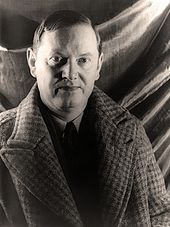
Evelyn Waugh, at the height of his career as a novelist
The Temple at Thatch was an unpublished novel by the British author Evelyn Waugh, his first adult attempt at full-length fiction. He began writing it in 1924 at the end of his final year as an undergraduate at Hertford College, Oxford, and continued to work on it intermittently in the following 12 months. After his friend Harold Acton commented unfavourably on the draft in June 1925, Waugh burned the manuscript. In a fit of despondency from this and other personal disappointments he began a suicide attempt before experiencing what he termed "a sharp return to good sense". (Full article...) -
Image 15The hermeneutic style is a style of Latin in the later Roman and early Medieval periods characterised by the extensive use of unusual and arcane words, especially derived from Greek. The style is first found in the work of Apuleius in the second century, and then in several late Roman writers. In the early medieval period, some leading Continental scholars were exponents, including Johannes Scotus Eriugena and Odo of Cluny. (Full article...)
Featured pictures
-
Image 1Golden earrings from Gyeongju, by the National Museum of Korea (from Wikipedia:Featured pictures/Artwork/Others)
-
Image 2Monolith, the Face of Half Dome, by Ansel Adams (restored by Bammesk) (from Wikipedia:Featured pictures/Artwork/Others)
-
Image 3Fliteline medallion of Gemini 7, by Fliteline (from Wikipedia:Featured pictures/Artwork/Others)
-
Image 4Pond in a Garden at Tomb of Nebamun, unknown author (edited by Yann) (from Wikipedia:Featured pictures/Artwork/Others)
-
Image 5Your Motherland Will Never Forget, at and by Joseph Simpson (restored by Adam Cuerden) (from Wikipedia:Featured pictures/Artwork/Others)
-
Image 6Alchemist's Laboratory at Heinrich Khunrath, by Hans Vredeman de Vries (from Wikipedia:Featured pictures/Artwork/Others)
-
Image 7Robbins medallion of Apollo 12, by the Robbins Company (from Wikipedia:Featured pictures/Artwork/Others)
-
Image 8Caricature of Wang Lianying, at and by Jefferson Machamer (restored by Crisco 1492) (from Wikipedia:Featured pictures/Artwork/Others)
-
Image 9Terragen scene at Scenery generator, by Fir0002 (from Wikipedia:Featured pictures/Artwork/Others)
-
Image 10Pixel art, by ReffPixels (vectorized by OmegaFallon) (from Wikipedia:Featured pictures/Artwork/Others)
-
Image 11Mirror writing, by Mahmoud Ibrahim (edited by Durova) (from Wikipedia:Featured pictures/Artwork/Others)
-
Image 13Doorway from Moutiers-Saint-Jean, by the Metropolitan Museum of Art (from Wikipedia:Featured pictures/Artwork/Others)
-
Image 16Robbins medallion of Apollo 7, by the Robbins Company (from Wikipedia:Featured pictures/Artwork/Others)
-
Image 17Fliteline medallion of Gemini 5, by Fliteline (from Wikipedia:Featured pictures/Artwork/Others)
-
Image 18The Onion Field, at and by George Davison (restored by Adam Cuerden) (from Wikipedia:Featured pictures/Artwork/Others)
-
Image 20Celadon kettle, by the National Museum of Korea (edited by Crisco 1492) (from Wikipedia:Featured pictures/Artwork/Others)
-
Image 22Robbins medallion of Apollo 8, by the Robbins Company (from Wikipedia:Featured pictures/Artwork/Others)
-
Image 23Fliteline medallion of Gemini 12, by Fliteline (from Wikipedia:Featured pictures/Artwork/Others)
-
Image 25Coca-Cola advertising poster, unknown author (edited by Victorrocha) (from Wikipedia:Featured pictures/Artwork/Others)
-
Image 28Robbins medallion of Apollo 11, by the Robbins Company (from Wikipedia:Featured pictures/Artwork/Others)
-
Image 29Sunrise, Inverness Copse, at and by Paul Nash (from Wikipedia:Featured pictures/Artwork/Others)
-
Image 30The Lady with the Lamp at Florence Nightingale, by Henrietta Rae and Cassell & Co (from Wikipedia:Featured pictures/Artwork/Others)
-
Image 31Robbins medallion of Apollo 15, by the Robbins Company (from Wikipedia:Featured pictures/Artwork/Others)
-
Image 33Love or Duty at Chromolithography, by Gabriele Castagnola (restored by Adam Cuerden) (from Wikipedia:Featured pictures/Artwork/Others)
-
Image 34Christmas angel at Gloria in excelsis Deo, by J. R. Clayton and The Brothers Dalziel (from Wikipedia:Featured pictures/Artwork/Others)
-
Image 35Robbins medallion of Apollo 10, by the Robbins Company (from Wikipedia:Featured pictures/Artwork/Others)
-
Image 36First page of Codex Mendoza, unknown author (from Wikipedia:Featured pictures/Artwork/Others)
-
Image 37The Custer Fight at Lithography, by Charles Marion Russell (restored by Adam Cuerden) (from Wikipedia:Featured pictures/Artwork/Others)
-
Image 39Robbins medallion of Apollo 9, by the Robbins Company (from Wikipedia:Featured pictures/Artwork/Others)
-
Image 40Crochet table-cloth, by Alvesgaspar/Júlia Figueiredo (from Wikipedia:Featured pictures/Artwork/Others)
-
Image 41Crown of the Andes, by the Metropolitan Museum of Art (from Wikipedia:Featured pictures/Artwork/Others)
-
Image 42Fliteline medallion of Gemini 6A, by Fliteline (from Wikipedia:Featured pictures/Artwork/Others)
-
Image 43The Pig Faced Lady of Manchester Square and the Spanish Mule of Madrid, at Pig-faced women, by George Cruikshank (from Wikipedia:Featured pictures/Artwork/Others)
-
Image 44Fliteline medallion of Gemini 11, by Fliteline (from Wikipedia:Featured pictures/Artwork/Others)
-
Image 46Idi Amin caricature, by Edmund S. Valtman (edited by Durova) (from Wikipedia:Featured pictures/Artwork/Others)
-
Image 47Autochrome nude study, by Arnold Genthe (edited by Chick Bowen) (from Wikipedia:Featured pictures/Artwork/Others)
-
Image 48Joseph and Potiphar's Wife, by Rembrandt (edited by Crisco 1492) (from Wikipedia:Featured pictures/Artwork/Others)
-
Image 49Ornamental latin alphabet at Initial, by F. Delamotte (restored and vectorized by JovanCormac) (from Wikipedia:Featured pictures/Artwork/Others)
-
Image 50Gin Lane at Gin Craze, by Samuel Davenport after William Hogarth (from Wikipedia:Featured pictures/Artwork/Others)
-
Image 51Fantascope at Phenakistiscope, by Thomas Mann Baynes (animated by Basile Morin) (from Wikipedia:Featured pictures/Artwork/Others)
-
Image 52Fliteline medallion of Gemini 9A, by Fliteline (from Wikipedia:Featured pictures/Artwork/Others)
-
Image 54"When We All Believe", at and by Rose O'Neill (from Wikipedia:Featured pictures/Artwork/Others)
-
Image 55Fliteline medallion of Gemini 8, by Fliteline (from Wikipedia:Featured pictures/Artwork/Others)
-
Image 57Rosette Bearing the Names and Titles of Shah Jahan, unknown author (from Wikipedia:Featured pictures/Artwork/Others)
-
Image 58Costume designed by David for legislators, at and by Jacques-Louis David and Vivant Denon (edited by Mvuijlst) (from Wikipedia:Featured pictures/Artwork/Others)
-
Image 59 Nautilus, by Edward Weston (restored by Yann) (from Wikipedia:Featured pictures/Artwork/Others)
-
Image 60The Miraculous Sacrement at Jean-Baptiste Capronnier, by Alvesgaspar (from Wikipedia:Featured pictures/Artwork/Others)
-
Image 61Robbins medallion of Apollo 14, by the Robbins Company (from Wikipedia:Featured pictures/Artwork/Others)
-
Image 62Robbins medallion of Apollo 17, by the Robbins Company (from Wikipedia:Featured pictures/Artwork/Others)
-
Image 63The Tiburtine Sibyl and the Emperor Augustus, by Antonio da Trento (restored by Adam Cuerden) (from Wikipedia:Featured pictures/Artwork/Others)
-
Image 64Fliteline medallion of Gemini 3, by Fliteline (from Wikipedia:Featured pictures/Artwork/Others)
-
Image 65Dali Atomicus at Salvador Dalí, by Philippe Halsman (edited by Trialsanderrors) (from Wikipedia:Featured pictures/Artwork/Others)
-
Image 67Mao Gong ding, by the National Palace Museum (edited by Crisco 1492) (from Wikipedia:Featured pictures/Artwork/Others)
-
Image 69Fliteline medallion of Gemini 10, by Fliteline (from Wikipedia:Featured pictures/Artwork/Others)
-
Image 71The Pirate Publisher—An International Burlesque that has the Longest Run on Record at The Pirates of Penzance, by Joseph Keppler (restored by Adam Cuerden) (from Wikipedia:Featured pictures/Artwork/Others)
-
Image 72Grant of Arms at Spanish heraldry, unknown author (edited by Durova) (from Wikipedia:Featured pictures/Artwork/Others)
-
Image 73Pepper No. 30, by Edward Weston (edited by Bammesk) (from Wikipedia:Featured pictures/Artwork/Others)
-
Image 74Zaandam at Etching revival, by James Abbott McNeill Whistler (edited by Durova) (from Wikipedia:Featured pictures/Artwork/Others)
-
Image 75Stained-glass example of chromostereopsis, unknown author (from Wikipedia:Featured pictures/Artwork/Others)
-
Image 76Weeki Wachee spring, Florida at Weeki Wachee Springs, by Toni Frissell (restored by Trialsanderrors) (from Wikipedia:Featured pictures/Artwork/Others)
-
Image 77Ijazah, by 'Ali Ra'if Efendi (edited by Durova) (from Wikipedia:Featured pictures/Artwork/Others)
-
Image 78Robbins medallion of Apollo–Soyuz, by the Robbins Company (from Wikipedia:Featured pictures/Artwork/Others)
-
Image 79H.M.S. Pinafore poster, by Vic Arnold (edited by Adam Cuerden) (from Wikipedia:Featured pictures/Artwork/Others)
-
Image 80Computer generated still life, by Gilles Tran (re-rendered by Deadcode) (from Wikipedia:Featured pictures/Artwork/Others)
-
Image 82Nude study at Figurative art, by Kenyon Cox (edited by Durova) (from Wikipedia:Featured pictures/Artwork/Others)
-
Image 83Stucco relief drawing at Maya civilization, by Ricardo Almendáriz (edited by Durova) (from Wikipedia:Featured pictures/Artwork/Others)
-
Image 84Ayyavazhi emblem at Ayya Vaikundar, by Vaikunda Raja (from Wikipedia:Featured pictures/Artwork/Others)
-
Image 85Beer Street at Beer Street and Gin Lane, by Samuel Davenport after William Hogarth (from Wikipedia:Featured pictures/Artwork/Others)
-
Image 86Tilework on the Dome of the Rock, by Godot13 (from Wikipedia:Featured pictures/Artwork/Others)
-
Image 87Taos Pueblo, by Ansel Adams (edited by Kaldari) (from Wikipedia:Featured pictures/Artwork/Others)
-
Image 89Magna Carta (An Embroidery), by Cornelia Parker (edited by Bammesk) (from Wikipedia:Featured pictures/Artwork/Others)
-
Image 90Fliteline medallion of Gemini 4, by Fliteline (from Wikipedia:Featured pictures/Artwork/Others)
-
Image 93Saturday Morning Breakfast Cereal panel, by Zach Weinersmith (from Wikipedia:Featured pictures/Artwork/Others)
-
Image 95Paper cutout featuring the Lord's Prayer, at and by Martha Ann Honeywell (from Wikipedia:Featured pictures/Artwork/Others)
-
Image 96A Brush for the Lead at Sleigh Ride, by Thomas Worth (edited by Durova) (from Wikipedia:Featured pictures/Artwork/Others)
-
Image 97The Adoration of the Shepherds at History of Christianity in Ukraine, unknown author (from Wikipedia:Featured pictures/Artwork/Others)
-
Image 98Vanity Fair cover art, by Ethel McClellan Plummer (edited by Durova) (from Wikipedia:Featured pictures/Artwork/Others)
-
Image 99The battle of Mazandaran at Mazandaran province, unknown author (from Wikipedia:Featured pictures/Artwork/Others)
-
Image 100Isle of Graia Gulf of Akabah Arabia Petraea at Caravan (travellers), by David Roberts and Louis Haghe (edited by Durova) (from Wikipedia:Featured pictures/Artwork/Others)
-
Image 104The Thin Red Line at Remembrance poppy, by Harold H. Piffard (restored by Adam Cuerden) (from Wikipedia:Featured pictures/Artwork/Others)
-
Image 105"Wikipedian Protester" at xkcd, by Randall Munroe (from Wikipedia:Featured pictures/Artwork/Others)
-
Image 106Segment of the Surrogate's Courthouse mosaic, by Rhododendrites (from Wikipedia:Featured pictures/Artwork/Others)
-
Image 107Robbins medallion of Apollo 13, by the Robbins Company (from Wikipedia:Featured pictures/Artwork/Others)
-
Image 108Gothic plate armour, by Anton Sorg (edited by Durova) (from Wikipedia:Featured pictures/Artwork/Others)
-
Image 109Madonna and child at Chiaroscuro], by Bartolomeo Coriolano (edited by Durova) (from Wikipedia:Featured pictures/Artwork/Others)
-
Image 110Robbins medallion of Apollo 16, by the Robbins Company (from Wikipedia:Featured pictures/Artwork/Others)
-
Image 111The King of Brobdingnag and Gulliver at Gulliver's Travels, by James Gillray (restored by Crisco 1492) (from Wikipedia:Featured pictures/Artwork/Others)
-
Image 114scene from the Little Lord Fauntleroy, by Elco. Corp. (edited by Durova) (from Wikipedia:Featured pictures/Artwork/Others)
-
Image 115Poster for the United States National Park Service at Federal Art Project, by Frank S. Nicholson (edited by Durova) (from Wikipedia:Featured pictures/Artwork/Others)
-
Image 1181910 cover of Life, by Coles Phillips (edited by Durova) (from Wikipedia:Featured pictures/Artwork/Others)
-
Image 119Cabiria poster, by N. Morgello (edited by Jujutacular) (from Wikipedia:Featured pictures/Artwork/Others)
Vital articles

Pottery is the process and the products of forming vessels and other objects with clay and other raw materials, which are fired at high temperatures to give them a hard and durable form. The place where such wares are made by a potter is also called a pottery (plural potteries). The definition of pottery, used by the ASTM International, is "all fired ceramic wares that contain clay when formed, except technical, structural, and refractory products". End applications include tableware, decorative ware, sanitary ware, and in technology and industry such as electrical insulators and laboratory ware. In art history and archaeology, especially of ancient and prehistoric periods, pottery often means only vessels, and sculpted figurines of the same material are called terracottas. (Full article...)
Categories
Get involved
- Check the recent changes page for improvements, other changes, and vandalism to these articles
- Article requests: Requests articles (arts and entertainment)
- Deletion discussions: Listed at Wikipedia:WikiProject Deletion sorting/Arts
- Expand: check Visual arts stubs to expand
- Notability: Articles with notability concerns, listed at WikiProject Notability
- Requested pictures: Arts topics, requested pictures
Related portals
- Pages with French IPA
- Wikipedia move-protected portals
- Wikipedia semi-protected portals
- Portals with triaged subpages from June 2024
- All portals with triaged subpages
- Portals with no named maintainer
- Automated article-slideshow portals with over 1000 articles in article list
- Redirect targets of redirected portals with existing subpages
- Unredirected portals with existing subpages







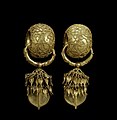


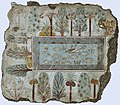










































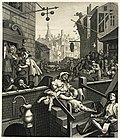







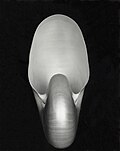
















































![Image 109Madonna and child at Chiaroscuro], by Bartolomeo Coriolano (edited by Durova) (from Wikipedia:Featured pictures/Artwork/Others)](http://upload.wikimedia.org/wikipedia/commons/thumb/4/49/Mary_Coriolano2.jpg/120px-Mary_Coriolano2.jpg)






















